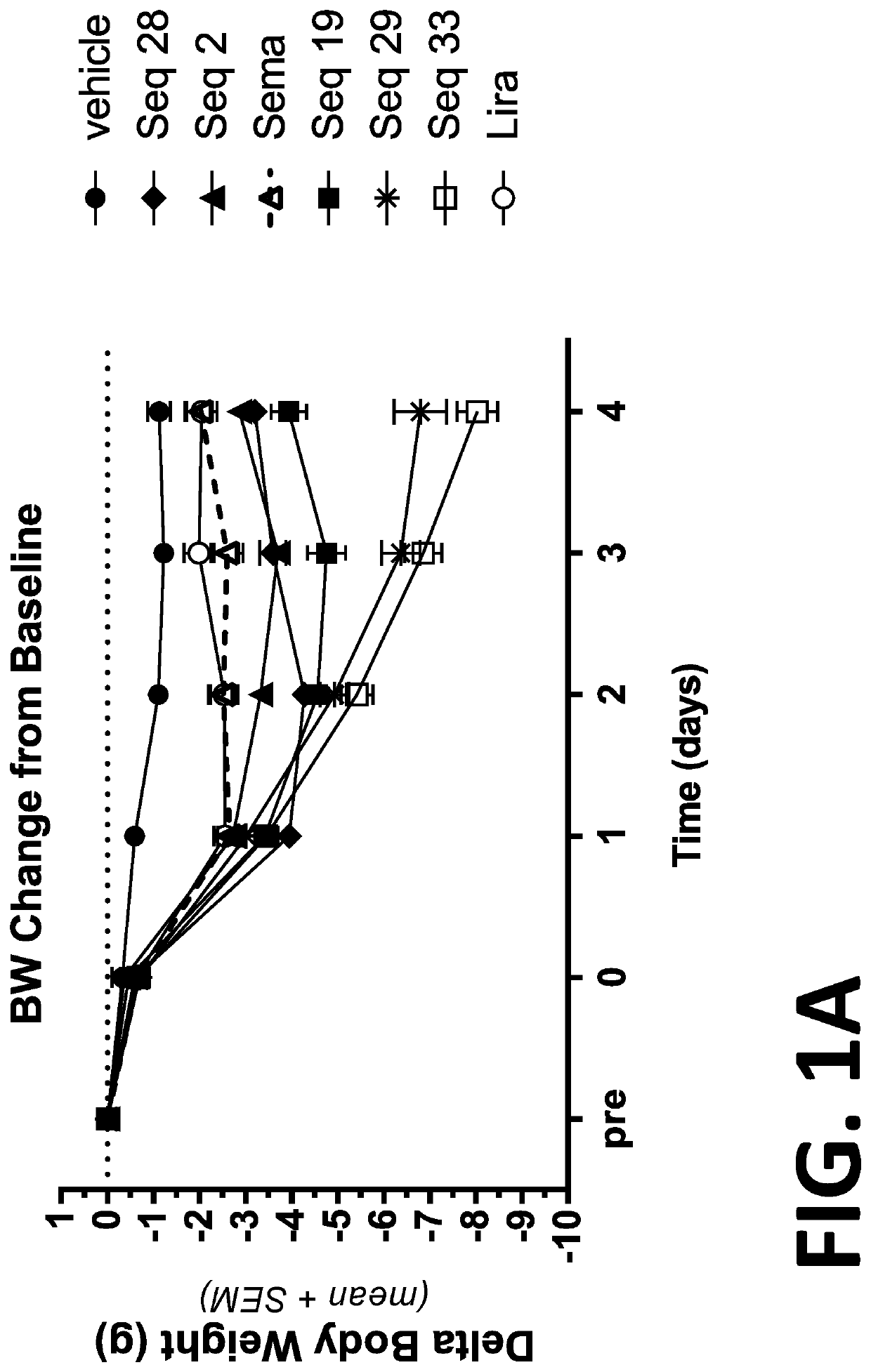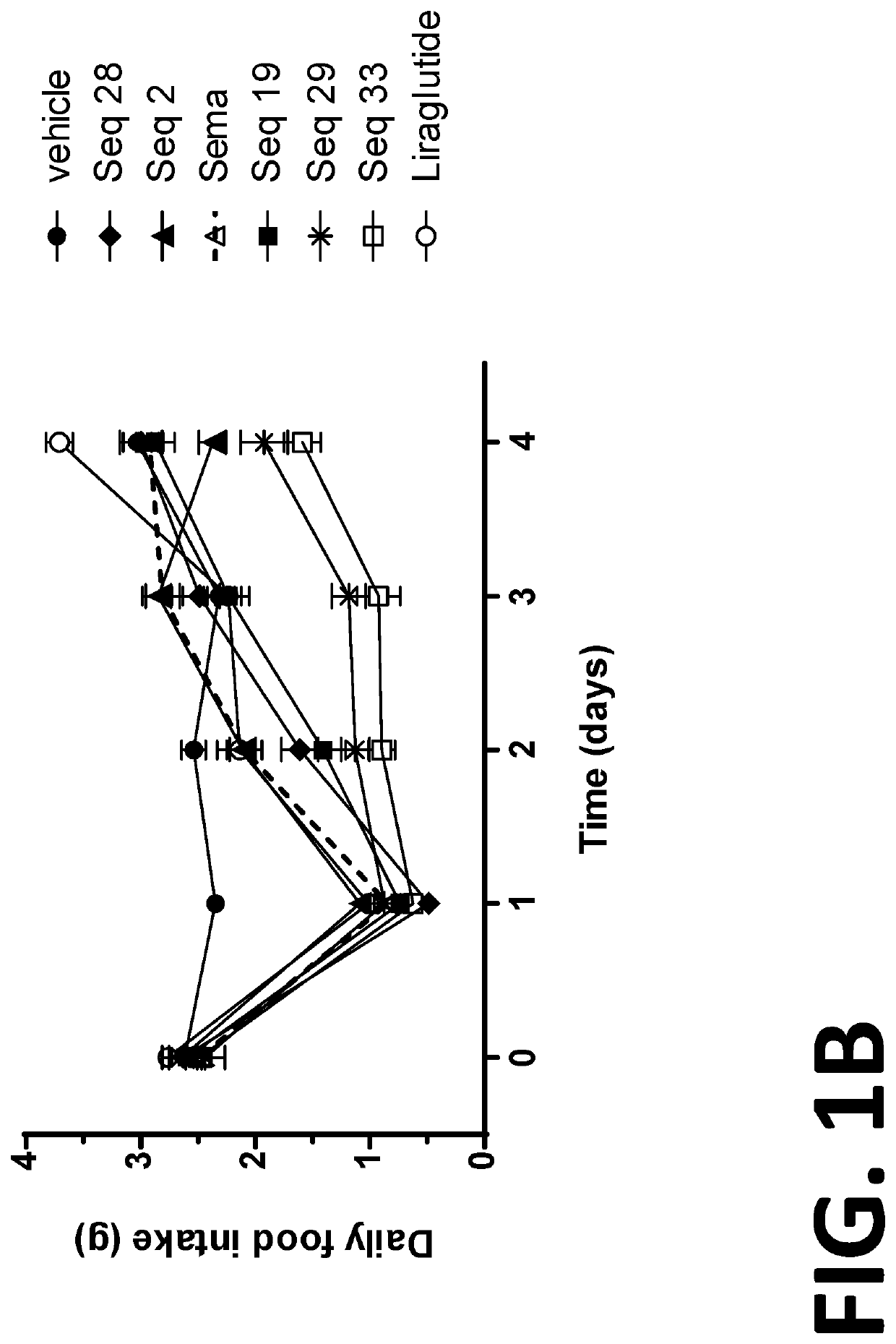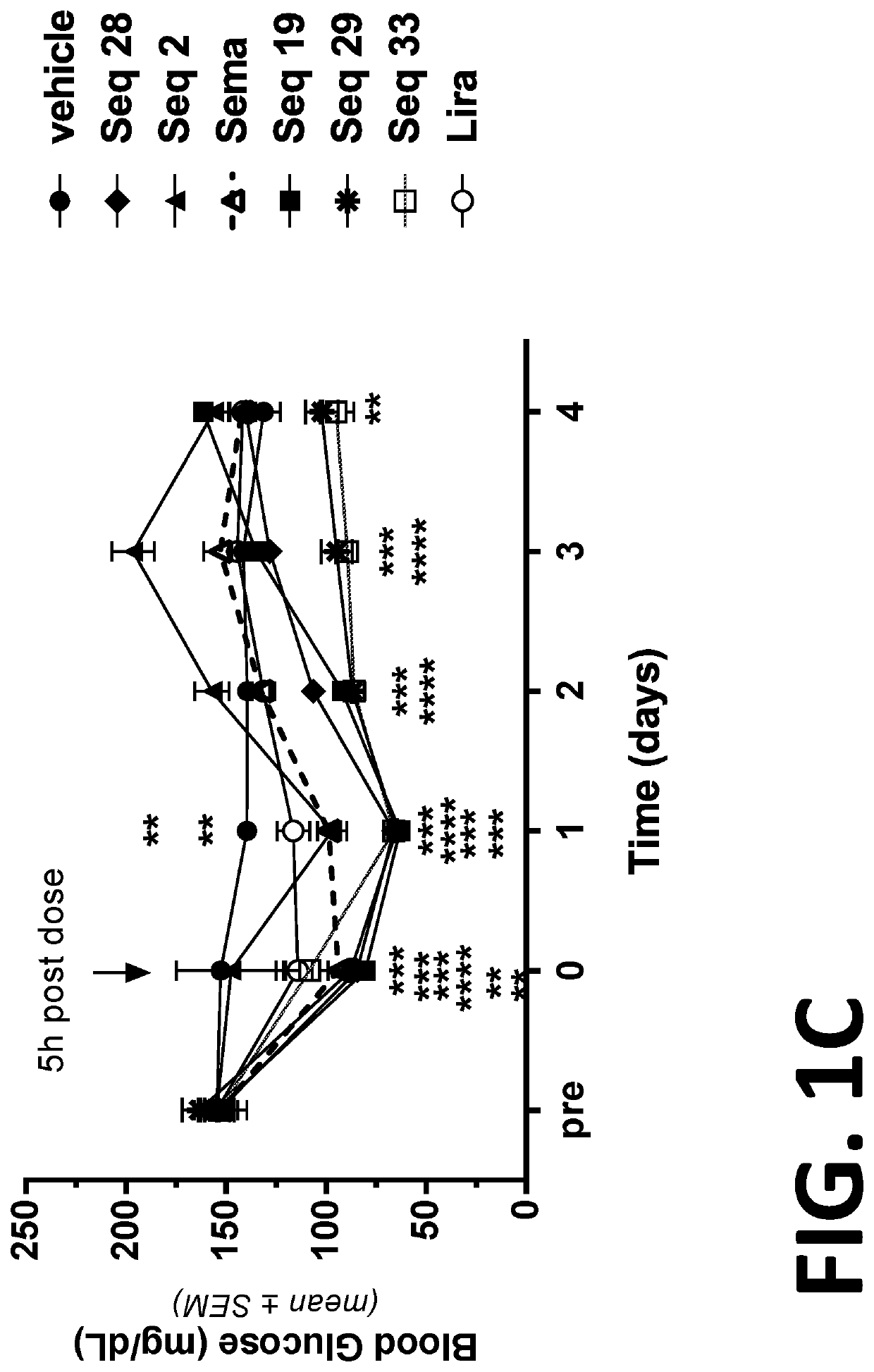Long-acting co-agonists of the glucagon and GLP-1 receptors
a technology of glucagon and glp-1, which is applied in the field of long-acting co-agonist peptides of the glucagon and glp1 receptors, can solve the problems of complicated translation of human observations, and achieve the effects of preventing or reducing an increase in body weight, preventing or treating hyperglycemia, and preventing or treating weight gain
- Summary
- Abstract
- Description
- Claims
- Application Information
AI Technical Summary
Benefits of technology
Problems solved by technology
Method used
Image
Examples
example 1
[0268]Peptides in Table 1 were synthesized by solid phase synthesis using Fmoc / t-Bu chemistry on a peptide multisynthesizer Symphony (Protein Technologies Inc.) on a 150 μmol scale, using either a Rink-amide PEG-PS resin (Champion, Biosearch Technologies, loading 0.28 mmol / g) or a Rink-amide PS resin (ChemImpex loading 0.47 mmol / g).
[0269]All the amino acids were dissolved at a 0.3 M concentration in DMF. The amino acids were activated with equimolar amounts of HATU (O-(7-azabenzotriazol-1-yl)-N,N,N′,N′-tetramethyluronium hexafluorophosphate) solution 0.3 M in DMF, and a 2-fold molar excess of DIEA (N,N-diisopropylethylamine), solution 2M in NMP. The acylation reactions were performed in general for 1 hour with a 5-fold excess of activated amino acid over the resin free amino groups with double 45 minutes acylation reactions performed from His' to Thr′ and from F22 to V23.
[0270]The side chain protecting groups were: tert-butyl for Glu, Ser, D-Ser, Thr and Tyr; trityl for Asn, Gln and...
example 2
[0277]Activity of the peptides at the Glucagon receptor (GCGR) and GLP-1 receptor (GLP1R) was measured in a cAMP activity assay.
[0278]Peptides were dissolved in 100% DMSO and serially diluted to generate 10 point titrations. The peptide solutions were then transferred into 384-well assay plates (150 nL / well). Assay ready frozen cells expressing human GLP1R or human GCGR were suspended in growth media consisting of DMEM medium (GIBCO), 10% FBS (GIBCO), 1×NEAA(GIBCO), 1× P / S (GIBCO), 10 ug / ml Blasticidin (GIBCO) and 200 μg / mL Hygromycin (GIBCO). Cells were then diluted in assay buffer consisting of PBS (GIBCO), 7.5% BSA (Perkin Elmer), 100 μM RO 20-1724 (Sigma), with or without 20% human serum (MP Biomedical). The cell suspensions (15 μL) were then added to the assay plates containing the peptide solutions (30,000 cells / well for human GCGR; 10,000 cells / well for human GLP1R). The cells were incubated for 1 hour at room temperature in the dark. Production of cAMP was determined using H...
example 3
[0280]Diet induced obesity (DIO) mice have long been used as surrogates for humans in the study of the efficacy of anti-obesity compounds. The results obtained from such mice in the study of obesity compounds are translatable to humans (See for example, Nilsson et al. Acta Pharmacologia Sinica 33: 173-181 (2012), which is incorporated herein by reference in its entirety). Thus, DIO mice are useful surrogates for humans for the testing the efficacy of compounds intended to treat obesity.
[0281]In this example, the duration of action of several of the peptides or co-agonist peptides was evaluated in diet-induced obese (DIO) mice. The duration of action of the peptides were compared to the duration of action of Semaglutide (sema) and Liraglutide (lira). The peptides tested were SEQ ID NOs: 2, 19, 28, 29, and 33 (Seq 2, Seq 19, Seq 28, Seq 29, and Seq 33, respectively).
[0282]DIO mice were divided into groups of eight mice per group and the initial average body weight, food intake and bas...
PUM
| Property | Measurement | Unit |
|---|---|---|
| body weight | aaaaa | aaaaa |
| pH | aaaaa | aaaaa |
| Mw | aaaaa | aaaaa |
Abstract
Description
Claims
Application Information
 Login to View More
Login to View More - R&D
- Intellectual Property
- Life Sciences
- Materials
- Tech Scout
- Unparalleled Data Quality
- Higher Quality Content
- 60% Fewer Hallucinations
Browse by: Latest US Patents, China's latest patents, Technical Efficacy Thesaurus, Application Domain, Technology Topic, Popular Technical Reports.
© 2025 PatSnap. All rights reserved.Legal|Privacy policy|Modern Slavery Act Transparency Statement|Sitemap|About US| Contact US: help@patsnap.com



